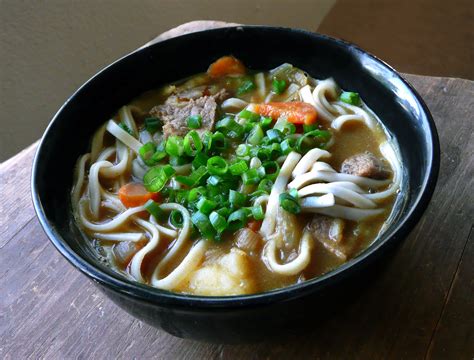Japanese Soup Recipes: A Culinary Journey
Japanese cuisine is renowned for its delicate flavors and elegant presentation, and its soups are no exception. From the comforting warmth of miso soup to the refreshing lightness of cold cucumber soup, Japanese soups offer a diverse range of tastes and textures to explore. This blog post will guide you through some popular and delicious Japanese soup recipes, perfect for both novice and experienced cooks.
Understanding the Essence of Japanese Soup
Before diving into specific recipes, let's appreciate the core principles that define Japanese soups. Simplicity and seasonality are key. Many Japanese soups utilize fresh, high-quality ingredients, allowing their natural flavors to shine. Umami, that savory depth of flavor, plays a crucial role, often achieved through the use of dashi (a flavorful broth), soy sauce, or mushrooms. The balance of sweet, salty, sour, and bitter is meticulously considered to create a harmonious culinary experience.
Key Ingredients in Japanese Soups:
- Dashi: This fundamental broth forms the base for countless Japanese soups. It's typically made from kombu (kelp) and bonito flakes (katsuobushi). You can also find pre-made dashi granules for convenience.
- Miso Paste: A fermented soybean paste that adds a rich, savory, and slightly salty flavor to miso soup. Different types of miso paste offer varying levels of saltiness and intensity.
- Soy Sauce (Shoyu): Adds saltiness and umami to the soup.
- Mirin: A sweet rice wine that adds sweetness and depth.
- Sake: Adds a delicate alcohol note and enhances the overall flavor. (Optional, can be omitted)
- Seasonal Vegetables and Proteins: Japanese soups often incorporate seasonal ingredients, like tofu, mushrooms, seaweed (wakame, nori), green onions, and various kinds of fish or seafood.
Easy Miso Soup Recipe (味噌汁 - Misoshiru)
This is arguably the most famous Japanese soup and a staple in many households. It's incredibly versatile and easy to customize.
Ingredients:
- 4 cups dashi
- 4 tablespoons miso paste (awase miso is a good all-purpose choice)
- 1/2 block firm tofu, cubed
- 1/4 cup wakame seaweed (rehydrated according to package instructions)
- 2 green onions, thinly sliced
Instructions:
- Heat the dashi in a saucepan over medium heat. Do not boil.
- In a small bowl, whisk a small amount of the hot dashi into the miso paste until smooth to prevent lumps.
- Gently pour the miso mixture into the saucepan with the remaining dashi. Stir gently.
- Add the tofu and wakame seaweed. Heat through, but do not boil.
- Ladle into bowls and garnish with sliced green onions.
Clear Soup with Chicken and Vegetables (鶏だしスープ - Tori Dashi Soup)
This recipe highlights the delicate flavors of chicken and seasonal vegetables.
Ingredients:
- 4 cups chicken broth
- 1 cup chopped chicken breast
- 1 carrot, thinly sliced
- 1/2 cup shiitake mushrooms, sliced
- 1/4 cup daikon radish, thinly sliced
- 1 stalk of celery, thinly sliced
- 1 tablespoon soy sauce
- 1 teaspoon mirin
- Salt and pepper to taste
- Chopped green onions for garnish
Instructions:
- Bring the chicken broth to a simmer in a saucepan.
- Add the chicken breast and simmer until cooked through.
- Add the carrots, mushrooms, and daikon radish. Simmer until the vegetables are tender.
- Stir in the soy sauce and mirin.
- Season with salt and pepper to taste.
- Ladle into bowls and garnish with chopped green onions.
Exploring Beyond the Basics: Other Japanese Soup Varieties
The world of Japanese soups is vast! Explore other delicious options like:
- Osuimono: A clear broth soup often featuring delicate seafood and vegetables.
- Tonjiru: A hearty pork and vegetable stew.
- Sunomono: A refreshing cold soup, often featuring cucumber and vinegar.
By mastering these fundamental recipes and techniques, you can embark on your own culinary journey through the diverse and delightful world of Japanese soups. Remember to experiment with different ingredients and seasonings to discover your personal favorites. Enjoy!
